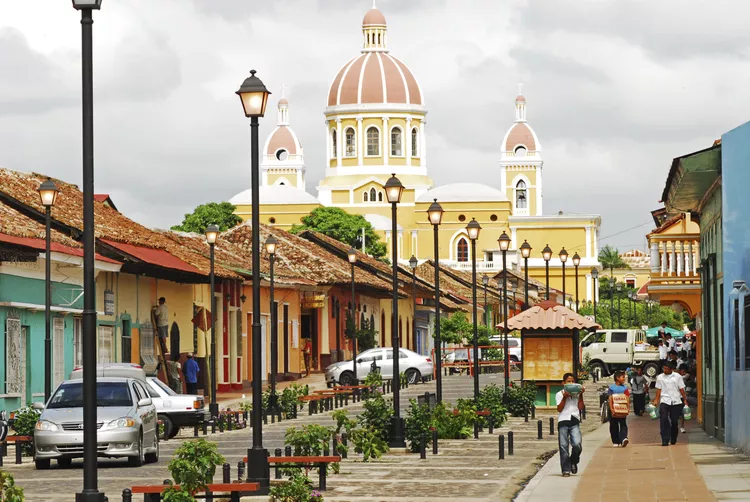Summary of Nicaragua
Nicaragua, the largest country in Central America, is bordered by Costa Rica to the south and Honduras to the north. About the size of Alabama, this scenic country features colonial cities, volcanoes, lakes, rainforests, and beaches. Known for its rich biodiversity, Nicaragua attracts more than one million tourists annually; tourism is the country’s second-largest industry after agriculture.
Early Historic Facts
Christopher Columbus explored the Caribbean coast of Nicaragua during his fourth and final voyage to the Americas. In the mid-1800s, an American doctor and mercenary named William Walker led a military expedition to Nicaragua and declared himself the president. His rule lasted only one year, after which he was defeated by a coalition of Central American armies and executed by the Honduran government. Although short, his time in Nicaragua was destructive; Colonial relics in Granada still bear scorch marks from when his troops set the city ablaze.
Natural Wonders
Nicaragua’s coastline lies along the Pacific Ocean on the west and the Caribbean Sea on its eastern shore. The waves of San Juan del Sur are regarded as some of the best for surfing in the world.
The country boasts the two largest lakes in Central America: Lake Managua and Lake Nicaragua, the second-largest lake in the Americas after Peru’s Lake Titicaca. Lake Nicaragua is home to the Lake Nicaragua shark, renowned as the world’s only freshwater shark, which mystified scientists for decades. Researchers discovered in the 1960s that these sharks were actually bull sharks that made their way inland through the San Juan River rapids from the Caribbean Sea.
Ometepe, an island formed by twin volcanoes in Lake Nicaragua, is the largest volcanic island in a freshwater lake globally. Concepción, a majestic cone-shaped active volcano, dominates the northern half of Ometepe, while the extinct volcano Maderas reigns over the southern half.
There are forty active and dormant volcanoes in Nicaragua. Although the country’s history of volcanic activity has created lush vegetation and enriched soil for agriculture, volcanic eruptions and earthquakes in the past have caused significant damage, particularly in Managua.
World Heritage Sites
Nicaragua is home to two UNESCO World Heritage Sites: the León Cathedral, the largest cathedral in Central America, and the ruins of León Viejo, which were constructed in 1524 and abandoned in 1610 due to fears of the nearby Momotombo volcano erupting.
Plans for a Nicaragua Canal
The southwest shore of Lake Nicaragua is only 15 miles from the Pacific Ocean at its closest point. During the early 1900s, plans were proposed to construct the Nicaragua Canal through the Isthmus of Rivas to connect the Caribbean Sea with the Pacific Ocean. However, the Panama Canal was ultimately built instead. Nonetheless, discussions about the Nicaragua Canal remain ongoing.
Social and Economic Issues
Poverty remains a critical issue in Nicaragua, making it the poorest country in Central America and the second-poorest in the Western Hemisphere after Haiti. With a population of roughly 6 million, about half live in rural areas, while 25 percent reside in the densely populated capital, Managua.
According to the Human Development Index, Nicaragua’s per-capita income in 2012 was approximately $2,430, and 48 percent of the population lived below the poverty line. However, the economy has been gradually improving since 2011, with a notable increase of 4.5 percent in the gross domestic product per capita index in 2015. Additionally, Nicaragua became the first country in the Americas to adopt polymer banknotes for its currency, the Nicaraguan Cordoba.





